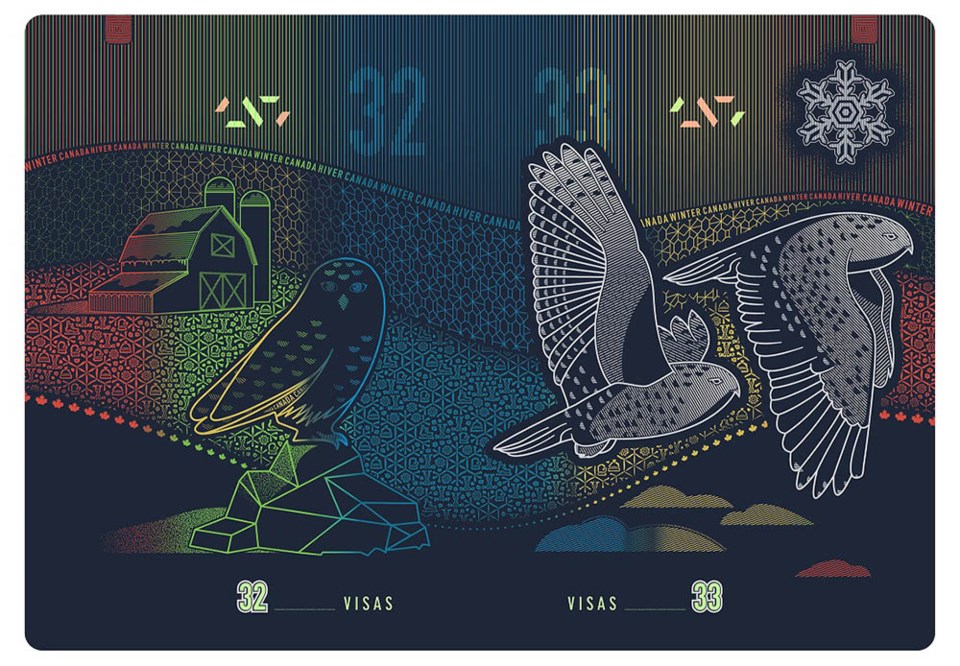Much like banknotes, passports need to be upgraded with new security features every decade or so, and much like banknotes, governments take the opportunity to freshen up the artwork, for better or worse.
What direction that takes seems to reflect the ideas of the decision-maker of the moment. On paper money, some readers will remember scenes of oil refineries and Inuit hunters. A series of bills in the 1980s left the strong impression that avid birdwatchers had been in charge of the design decisions. In due course the birds gave way to smiling children playing hockey on a frozen pond, and the Queen got steadily older.
In all cases, notes are redesigned as part of a running arms race with increasingly sophisticated forgers, and the change to the artwork is the fun part.
Similarly, passports are tinkered with every decade or so. As a child, I had a passport that stoutly declared that 'a Canadian citizen is a British subject,' a debatable idea at the time (the early '70s) and one that in due course disappeared.
Earlier in May, the federal government announced changes to the cover and inside artwork of the Canadian passport. Out are scenes of history; in are depictions of nature and daily life: bears, owls, children enjoying the outdoors.
Some loved it, some, like the National Post writer who denounced it as "yet another step in Canada's decline," and opposition leader Pierre Poilievre, who complained that "they erased Vimy Ridge for a squirrel," hated it.
So we asked you what you thought, and 8,921 of you had your say.
The takeaway: the passport changes have limited potential as a culture war issue. More dislike the new design than like it, but a larger group really doesn't care.
Our reader polls get lots of responses from outside Ontario, many from popular vacation destinations, and in one case from Tajikistan. We were curious to see if people who were travelling had different views from those who weren't, but that isn't at all the case:
It's hard to see a strong regional pattern in the results. Communities are ranked in declining order of indifference.



